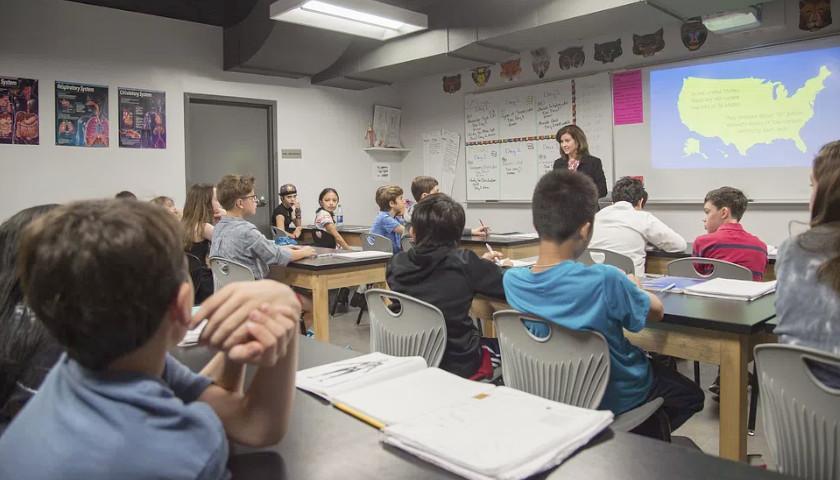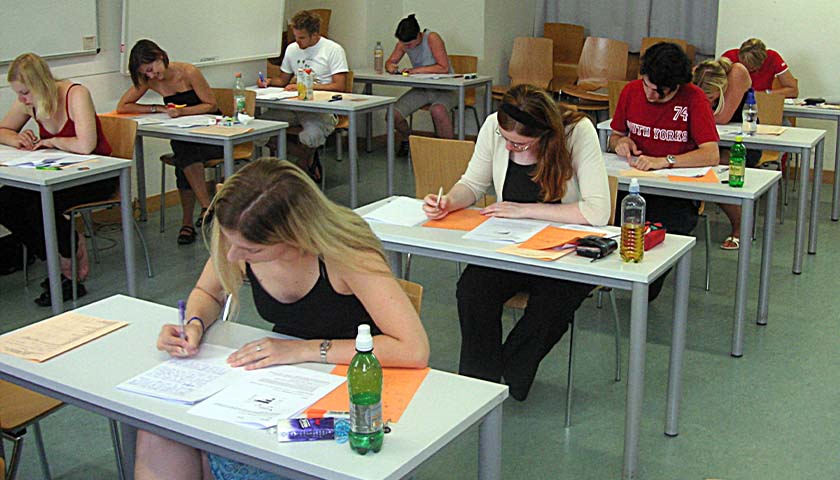by Larry Sand
There has been, for some time now, optimism about a post-Covid recovery for American public school students, but sadly, there is no good news to be had.
Looking through a long lens, government-run education has been an enterprise rife with failure. The National Commission on Excellence in Education released a report in 1983 titled “A Nation at Risk,” which used dire language, asserting that “the educational foundations of our society are presently being eroded by a rising tide of mediocrity that threatens our very future as a nation and a people.”
The report also stated: “If an unfriendly foreign power had attempted to impose on America the mediocre educational performance that exists today, we might well have viewed it as an act of war.”
Well, that war is still on, and it has been a massacre. A Gallup poll from earlier this year revealed that just 26% of Americans have a “great deal/fair amount” of confidence in public schools. To wit….
ACT scores
The average scores on the American College Testing (ACT) exams, which are used for college admission, have fallen the last six years in a row and are the worst since 1991. The average scores for reading, math, and science all fell below benchmark levels that are necessary for students to have a chance at succeeding in their first year of college.
To make things even worse, the education establishment’s “fix” for the problem is to put lipstick on the proverbial pig. According to an ACT research report, while students’ ACT scores have deteriorated, student course grades have increased sharply.
The K-12 proficiency problem
The ACT downturn is hardly surprising if you look at the latest National Assessment of Educational Progress (NAEP) results, which show that nationwide, 29% of 8th-graders are proficient in reading, and just 26 % are proficient in math.
In California, the most recent Smarter Balanced test scores released in late October indicate that just 46.7% of students are meeting literacy standards, and a meager 34.6% are proficient in math. The tests are given to all students in grades 3–8 and grade 11.
Big cities, notably, are not faring well. In Los Angeles, proficiency rates are 41.2% in English and a paltry 30.5% in math.
In Chicago, minorities are especially poorly educated, with 11% of Black and 17% of Hispanic students reading at grade level.
But Los Angeles and Chicago schools are exemplary compared to Baltimore, where the latest NAEP scores show that just 10% of 4th-graders and 15% of 8th-graders are proficient in reading. Additionally, at 13 Baltimore high schools, not one student tested proficient on the 2023 state math exam.
Students aren’t showing up
Additionally, as reported by The 74, two out of three students were enrolled in public schools with high or extreme rates of chronic absenteeism during the 2021-22 school year – more than double the rate in 2017-18. Students who miss at least 10% of the school year – for any reason – are considered chronically absent.
Also, according to data from the National Center for Education Statistics, 35 states and more than two-thirds of school districts are serving fewer students than they did five years before the pandemic shutdowns. Six and a half million more students missed at least 10% or more of school days in the 2021-22 year than in 2017-18, which translates to 14.7 million students being chronically absent.
In Ohio, the student absentee rate has almost tripled in the past six years. Nearly 34%, or 565,651 students, were chronically absent in 2022. In Chicago, a third of the city’s schools are at less than 50% capacity.
Why are students ditching school?
While there are many reasons for the great uptick in absenteeism, the education establishment is the prime factor. Most recently, schools abandoned their mission by hysterically shutting down as a response to Covid, thus alienating many families.
Also, the stress on whacked-out sexuality is certainly a contributor to absent kids. Many parents don’t want to subject their child to the National Education Association Pronoun Guide, which uses silly terms like “ze, zim and zer.”
In Illinois, the Evanston–Skokie school district has adopted a curriculum that teaches pre-K through 3rd-grade students to “break the binary” of gender.
In Oregon, the State Department of Education’s health standards may soon require 6th-grade students to be able to define “sexual and romantic orientations” and “vaginal, oral, and anal sex” if implemented.
The drive to indoctrinate students with BLM, CRT, DEI, and other Marxist-driven drivel has also played a role in the public school exit. In California, the new math framework contends that mathematics should be used to “both understand and impact the world.” It argues that math teachers should hold the political position that “mathematics plays a role in the power structures and privileges that exist within our society and can support action and positive change.”
Rhode Island’s current social studies standards define “how power can be distributed and used to create a more equitable society for communities and individuals based on their intersectional identities.”
In Buffalo, NY, students are told that “all white people” perpetuate systemic racism, and kindergarteners were forced to watch a video of dead black children, warning them about “racist police and state-sanctioned violence,” which might kill them at any time.
All the while, the number of teachers is increasing
The faux ongoing teacher union mantra about a “nationwide teacher shortage” is holding less water than ever these days. Marguerite Roza is the Director of the Edunomics Lab at Georgetown University. She tracks staffing at the nation’s public schools and explains that staffing has been on the upswing since the Great Recession of 2008, as schools added back staff that they had been forced to cut in the economic downturn.
Then came seven consecutive years of strong economic growth beginning in 2013, followed by the pandemic-fueled hiring bonanza. In 2020, the federal government sent more than $200 billion in pandemic recovery funds to schools, which hired additional counselors, interventionists (tutors), and aides and increased their reserves of substitute teachers. While not every school has increased staffing levels, Roza asserts, it’s a widespread national trend. Her organization produced graphs for six states – Connecticut, Massachusetts, Michigan, Texas, Washington and Pennsylvania – that release their staffing and student enrollment data publicly. It could be years before complete national data is available.
Roza reports that in the past decade, the population of K-12 students in Massachusetts dropped by 42,000, but the number of school employees grew by 18,000. In Connecticut, public school enrollment fell 7% while staffing rose 8%. Even in states with expanding populations, school staff has been increasing far faster than students. In Texas, for example, there are now 367,000 more students, a 7% increase over the past decade, but the number of education employees has surged by more than 107,000, a 16% jump. Staffing is up 20% in Washington state, while the number of students has risen by less than 3%.
While the massive hiring has done virtually nothing for students, it has successfully picked the pockets of the country’s already beleaguered taxpayers.
“I’m from the Government, and I’m here to help.”
Can you imagine if your local market sold inferior food, and was staffed by some wonderful people but the not-so-wonderful ones could not be fired due to union protections? And at the same time, they kept adding employees and sold even more inferior food – would you shop there? Of course not.
In all likelihood, that store would go bankrupt. But when the government runs something, there’s an endless supply of taxpayer money for them to use and abuse.
Ronald Reagan once quipped, “The nine most terrifying words in the English language are: “I’m from the Government, and I’m here to help.” Those words from 1986 still ring true today, especially in the area of education. We need to get the government out of the ed biz ASAP.
– – –
Larry Sand, a former classroom teacher, is the president of the non-profit California Teachers Empowerment Network – a non-partisan, non-political group dedicated to providing teachers and the general public with reliable and balanced information about professional affiliations and positions on educational issues. The views presented here are strictly his own.






Educational systems are among the highest-priority targets of Marxist movements. To persuade young people to embrace socialism, they must be “dumbed down,” for knowledge and thinking skills would make its absurdity too plain. Add to this that any unionized occupation will have an associated power structure, which will offer opportunities for subversion and manipulation to those who can rise in its hierarchy. Sadly, the personal interests of “educators” will always trump whatever commitment they feel toward actual education.
We are near the end of a corrupting and subverting process more than century long. It cannot be reversed. The existing educational systems must be destroyed.
Public education IS NOT a business! Therefore, it is foolish to make the comparison.